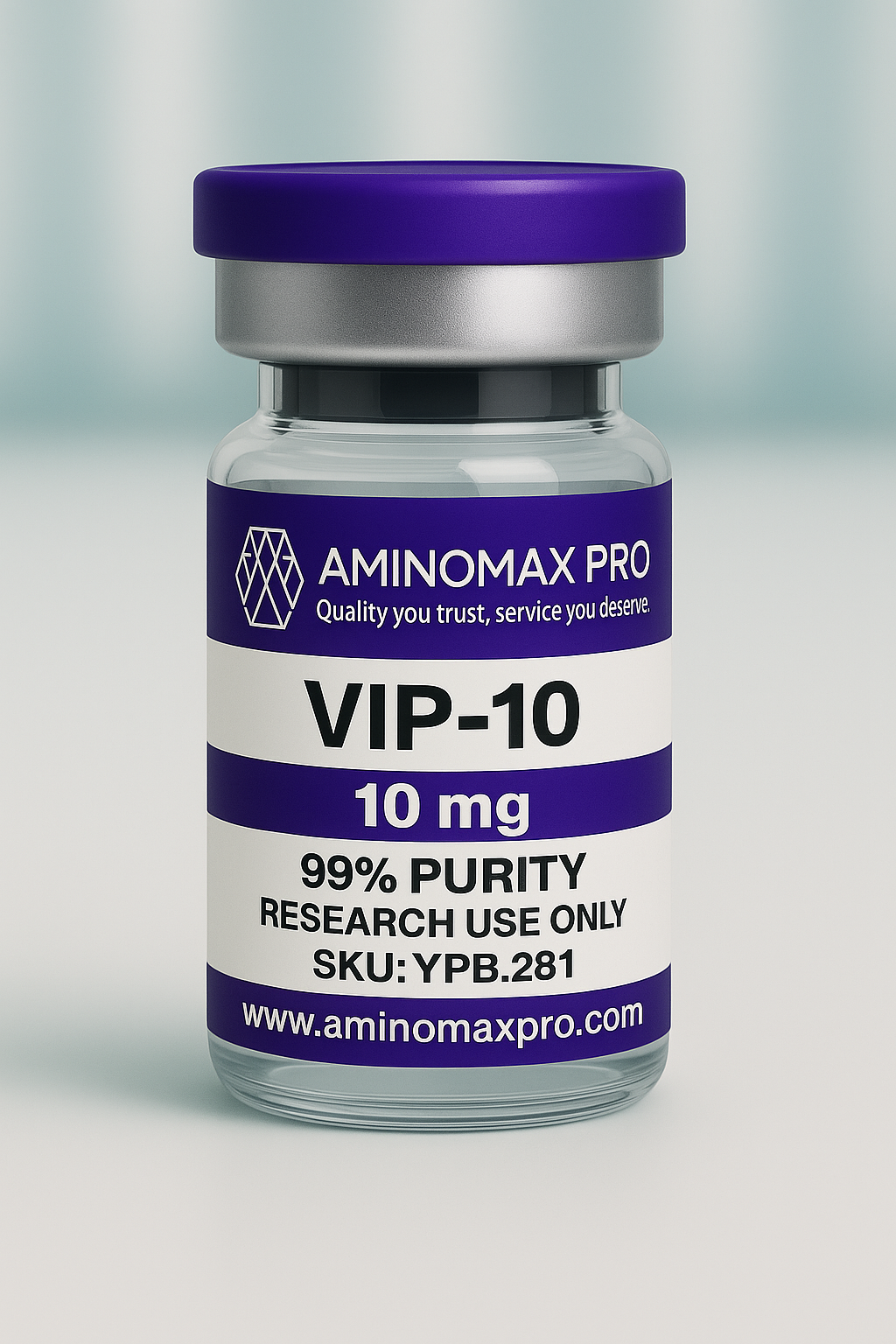Description
VIP-10 – Technical Biochemical Mechanism Profile
(Vasoactive Intestinal Peptide analogue; VPAC receptor agonist – research use only)
VIP-10 is a synthetic analogue of Vasoactive Intestinal Peptide (VIP) engineered to selectively activate VPAC1 and VPAC2 receptors with increased metabolic stability.
VPAC1/2 are Gs-coupled GPCRs widely expressed on neuronal, endocrine, and immune cells.
Their activation strongly induces adenylyl cyclase → cAMP → PKA signaling, along with downstream Epac, CREB transcription, eNOS/NO production, and immune-regulatory gene suppression through NF-κB inhibition.
✅ 1. Primary Molecular Targets
VPAC1 and VPAC2 Receptors
-
Class B GPCRs
-
Coupled predominantly to Gsα, with secondary Gq activity in some tissues
-
Activation yields:
-
↑ cAMP
-
PKA phosphorylation of transcription factors
-
Ca²⁺ modulation
-
NO/eNOS upregulation in endothelial systems
-
✅ 2. Core Signaling Pathways
A. cAMP → PKA → CREB (Primary)
-
VIP-10 increases intracellular cAMP
-
Activates PKA
-
PKA phosphorylates CREB
-
CREB binds CRE-promoters controlling neuroendocrine and immune genes
Representative CREB-regulated genes:
-
BDNF
-
NR4A1
-
SLC2A4 (GLUT4)
-
IL10 (anti-inflammatory)
B. Epac (Exchange Protein Activated by cAMP)
cAMP directly activates Epac1/Epac2, affecting:
-
Small GTPase Rap1
-
Endothelial barrier stability
-
Cytoskeletal reorganization
Measured gene/effector outputs:
-
RAP1A
-
VASP
-
Tight junction proteins (OCLN, CLDN5)
C. NO / eNOS Axis (Endothelial Models)
-
PKA and Ca²⁺ signaling upregulate eNOS (NOS3)
-
↑ Nitric oxide synthesis
-
Vasodilatory and angiogenic gene expression
Relevant targets:
-
NOS3
-
KDR/VEGFR2
-
VEGFA
D. NF-κB Inhibition (Immunomodulatory Context)
VIP-10 suppresses NF-κB activation by:
-
Reducing p65 nuclear translocation
-
Increasing IκB stabilization
NF-κB-regulated genes decreased in immune models:
-
IL1B
-
TNFA
-
IL6
-
COX-2 (PTGS2)
Anti-inflammatory genes increased:
-
IL10
-
TGF-β
✅ 3. Second Messengers & Enzymatic Outputs
| Second Messenger | Mechanistic Effect |
|---|---|
| cAMP ↑ | Major signaling driver, activating PKA & Epac |
| PKA | CREB phosphorylation, ion channel & eNOS regulation |
| Epac | RAP1 activation, endothelial barrier stabilization |
| Ca²⁺ | Endothelial & neurosecretory signaling |
| NO | Vasodilation & angiogenic responses |
✅ 4. Representative Downstream Gene Targets
| Functional Class | Example Genes |
|---|---|
| Neuroendocrine | BDNF, CREB1, NR4A1 |
| Angiogenesis | VEGFA, KDR, NOS3 |
| Immune regulation | IL10, TGF-β, IL1B, TNFA, IL6, NFKB1 |
| Cytoskeletal / Barrier integrity | VASP, RAP1A, CLDN5, OCLN |
| Metabolic signaling | SLC2A4 (GLUT4), PDK4, PPARGC1A |
✅ 5. Mechanistic Summary
-
VIP-10 is a VPAC1/VPAC2 agonist
-
Drives cAMP → PKA → CREB transcription
-
Activates Epac/Rap1 for cytoskeletal and endothelial effects
-
Upregulates eNOS → NO production in vascular models
-
Suppresses NF-κB-mediated cytokine transcription
-
Alters genes involved in immune modulation, angiogenesis, and cellular metabolism
Research-Only Classification
VIP-10 is supplied exclusively for controlled in-vitro laboratory research.
Not authorized for human or animal administration, therapeutic use, or any biological application outside research environments.


